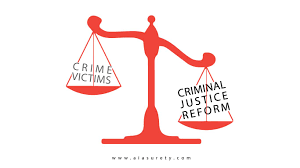Crimes related to drugs comprise a wide range of actions that are prohibited by law because they are connected to substances that are under control. Usually, these substances are categorized according to their medicinal value, propensity for abuse, and dependence. This essay will examine the numerous drug-related criminal categories, their effects on society and the individual, and the current drug policy controversy.
Classifying Narcotic Offenses:
Drug offenses can be broadly categorized into three main areas:
Production and Distribution:
This includes the illegal drug’s growing, making, shipping, and retailing. Small-scale possession with the intent to distribute to large-scale worldwide drug trafficking, frequently under the supervision of organized crime syndicates, are examples of offenses falling under this category.
Possession:
This is the state of having a controlled substance in one’s possession, including greater volumes that may indicate distribution as well as quantities intended for personal use. The type and amount of drugs involved usually determine how serious the offense is.
Use:
The simple act of utilizing a controlled substance is illegal in several places. However, because to concerns about public health and the belief that criminalization is unsuccessful in reducing drug use, there has been a tendency in recent years towards the decriminalization or legalizing of specific drug uses for personal use.

Drug-related offenses have serious repercussions for offenders, their communities, and society at large.
Consequences for individuals:
Those found guilty of drug charges may be sentenced to jail time, fines, probation, community service, and other sanctions. These fines may have long-term effects, making it more difficult to get housing, work, and further education. Furthermore, drug usage itself can result in relationship troubles, addiction, and health issues.
Consequences for the community:
Drug-related offenses can raise the rate of crime, violence, and gang activity, which can affect a community’s sense of safety and security. Additionally, drug usage can cause property values to drop and the general quality of life in impacted areas to deteriorate.
Consequences for society:
Drug-related crimes impose a heavy financial strain on society. This covers the price of drug addiction-related law enforcement, prosecution, jail, and medical care. The productivity loss brought on by drug abuse and jail also adds to the costs to society.
The Debate on Drug Policy:
Drug control strategy is still a hotly debated topic with two primary schools of thought:
Prohibition:
This strategy places a strong emphasis on making the manufacturing, distribution, and possession of drugs illegal. Supporters claim that it lessens the negative effects of drug usage and discourages drug use.

Harm reduction :
is a strategy that puts an emphasis on reducing the harmful effects of drug use, even if it doesn’t always lower the prevalence of usage. The techniques covered include decriminalization, needle exchange initiatives, and drug treatment alternatives.
The success of each strategy in reaching the intended goals is at the heart of the drug policy debate. Proponents of prohibition contend that it discourages people from participating in drug-related activities and conveys a strong message of disapproval. Critics counter that instead of addressing the underlying reasons of drug addiction, it creates a black market dominated by criminal groups and raises the expense of policing for society.
Proponents of harm reduction contend that by halting the spread of infectious diseases, averting overdose deaths, and providing access to treatment options, their strategy prioritizes public health and safety. Although they admit that there could not be a noticeable drop in drug usage, they think it provides a more sensible and compassionate way to lessen the harmful effects of drug use.
The Path Ahead:
Drug-related crimes continue to have a big impact on both society and the individual. Taking into account different viewpoints and taking a comprehensive strategy is necessary to address this difficult issue. Public safety must always come first, but it’s also important to recognize the limits of prohibition and look into evidence-based substitutes like harm reduction techniques. A comprehensive strategy must also address the underlying reasons of drug use, which include inequality, poverty, and mental health problems.
It will need continued investigation, candid communication, and cooperation between governmental bodies, law enforcement organizations, public health experts, and community members to find answers. The ultimate objective should be to reduce the negative effects of drug usage while advancing personal development and public safety.
It’s crucial to remember that this essay just offers a broad overview of the subject; it doesn’t dive into precise legal specifics or the continuing debates over policy in many countries. Investigating legal and public health organizations’ resources in light of certain regional settings is necessary while looking for more information.



